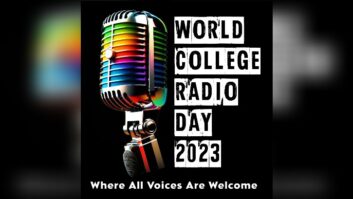We think the idea to develop a new home for AMs on an expanded FM band using TV Channels 5 and 6 is a fascinating one.
In the name of more efficient spectrum use, a small group of consulting engineers and a lawyer calling themselves the Broadcast Maximization Committee has proposed that analog TV Channels 5 and 6 be repurposed for radio after February’s DTV transition (story, Sept. 10).
“Due to the inherent noise limitations on the lower VHF frequencies for TV, the digital doesn’t work so well,” BMC spokesman Bert Goldman told Radio World. Of 1,814 TV stations going digital, only 24 in the nation have chosen to stay on TV Channels 5 and 6 (76-88 MHz) for their DTV channels, according to the FCC.
BMC included a migration plan for these stations in its proposal, as well as a suggestion for helping them pay to relocate.
Then it outlined a way for licensed AMs, LPFMs and non-com FMs that wish to move to the “EXB” band. LPFMs would use the new band and noncoms would be “re-packed,” all in the name of more efficient spectrum use and helping make the nation’s radio signals more robust with reduced interference from channel overcrowding.
The new EXB AMs would operate as FMs on 100 kHz channels, giving them the ability to go all-digital. The proposal also calls for “repacking” the remaining (likely clear-channel) stations on the AM band to provide more space between channels.
This plan certainly is dramatic. It would require careful long-term planning and it would upset many apple carts. But the BMC has provided a valuable service. They took an idea that others have banged around and attempted at least to begin to address specific implementation questions. Of all the plans to repurpose TV Channels 5 and 6 for radio, this is the most comprehensive; it provides a possible road map.
Aside from the possible boon to small, strapped AM operators, a big benefit of using Channel 6 is that it would greatly improve the situation for NCE FMs that have been limited in power for so many years. The current NCE Channel 6 problem would be removed, not just shifted down the dial, because TV Channel 4 is not contiguous with Channel 5 and whatever new use is made of Channel 4 will not be adjacent to the low end of the proposed radio band.
Creative use of this spectrum also opens the intriguing possibility of a nationally reserved channel for NOAA/DHS uses.
The BMC acknowledges that many contentious decisions would need to be made by the FCC, such as who would move first and how long the migrations would take. Reaction to costs could derail such a plan. TV stations would incur expenses, as would any radio stations that opted to move.
Many radio groups will no doubt oppose the idea of a new band, having spent money to transmit digitally from where they are; further, radio companies have invested a great deal in branding their stations. To move to different frequencies is a frightening idea for some people.
Many elements would have to fall into place for the plan to work; and as the pace of adoption of HD Radio has shown, such changes may take — indeed probably require — a very long time to come to fruition.
However we think the idea should be treated by industry leaders as a platform to launch serious debate about whether the industry and its listeners would benefit from spectrum reallocation.
We need to take a long view for a healthy radio service. We need to think creatively about how to make best use of our spectrum. Like BMC, we believe this can be the start of a conversation.
The NAB board passed a resolution recently opposing re-purposing TV channels for radio. We think it acted too quickly in doing so.
We’d like to see a session at the next NAB convention that would allow the consultants to explain their ideas and answer questions. Let’s get talking.
—Radio World










